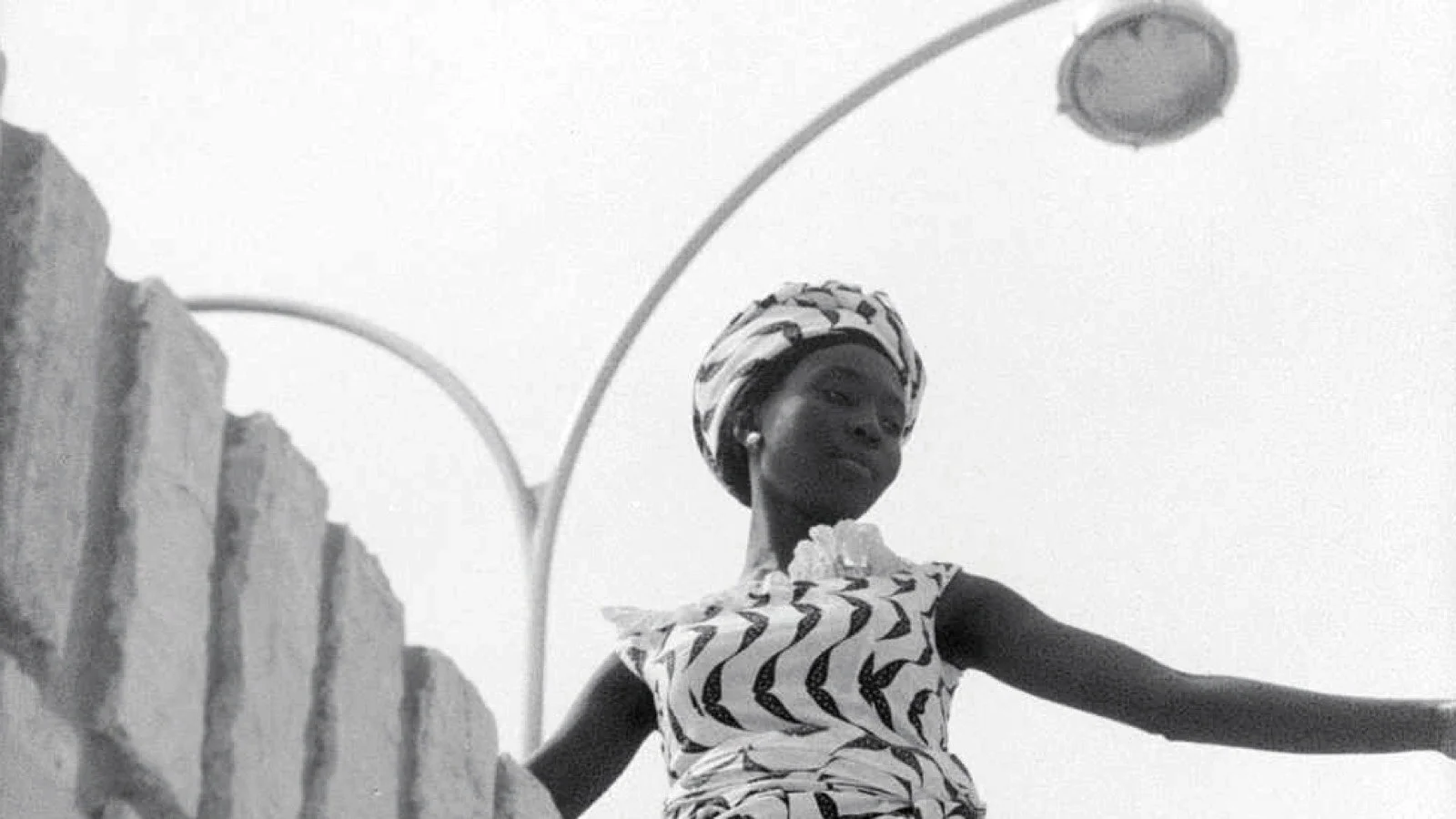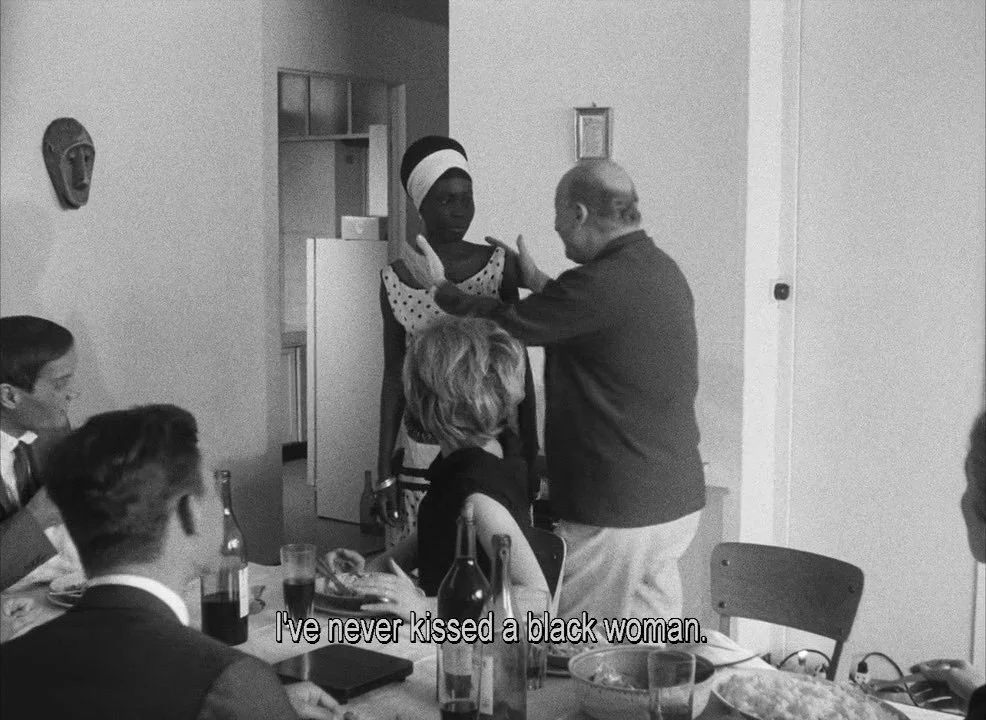Black Girl (1966) - Film Review, Sequence Analysis
Film Review
In the film Black Girl (1966) written and directed by Ousmane Sembene describes the story of a young African woman Diouana who struggles to work as a servant in France. Critically acclaimed filmmaker Ousmane Sembene is recognized as the father of African Cinema. Most of his iconic works consist of novels and films such as Le Docker Noir (The Black Docker, 1956), Barom Street (1963), and Moolaade (2004). But, in this particular film, Black Girl, the 65-min. black and white foreign film, centralizes around the impact of French Colonialism on Senegal. This realistic drama displays the pressure on black identity and nationalism through the post-colonial era.
The story takes place in France where a young Senegalese woman Diouana leaves her home Dakar and is invited to serve as a maid for a French white couple. Diouana has always dreamt of France as a place of paradise but in reality, it is not the lifestyle she seems it to be. Believing that she would look after her employer’s children, Monsieur and Madame show no sympathy for Diouana. They view Diouana as a slave and nothing more, expecting her to only work, cook, and clean. But there seems to be a misunderstanding that Diouana has the same desires and needs just as her employers. Though, there will never be an equal respect for Diouana in Monsieur’s household. Diouana finds herself locked in a prison. At one point she cries, “France is only the kitchen.” Madame believes that Diouana should be grateful for what is offered to her such as a home and a bed. But Diouana doesn't even get the opportunities to do what she truly wants. She can’t even be herself, which is making her forget who she truly is. And this is where she regrets taking the job.
The film is a cultural investment. It explores the importances of cultural themes such as exploitation, identities, and patriarchy. Though these themes help audiences shift stereotypical view. We are presented with these stereotypes through which Diouana experiences with Monsieur and Madame. But although these characters don’t seem to address their stereotypical views, it is portrayed through a blind manner. An example of this would be how during a dinner sequence, Diouana’s cooking is called out to be “Real Authentic African cooking.” This could also relate to how Madame locks Diouana in her room for her “own safety.” To the French, there is no realization of Diouana’s existence as a person. She has become dehumanized, and trapped in loneliness due to the pigmentation of her skin.
The film itself is beautifully well done. The formal techniques displayed throughout the story is what helps strengthen the film. One of the techniques that Sembene offers is the use of diagetic and non diagetic sound. This is essential throughout the film as main protagonist Diouana narrates the story. As the viewer, we are told what to think instead of creating our own interpretations of the characters and the story. Sembene chooses to focus more on the feelings of Diouana throughout the film. Because most of what we know from Diouana’s feelings originate from the voice overs. Whether it’s her internal thoughts or ideas, much of what she feels is displayed throughout the story.
What makes this film a realistic drama are the themes incorporated such as race, gender, and culture. All of these thematic elements play a role in this film which ultimately creates the tension between the two groups. Though a theme that stood out to me was colorization. How the black and white aesthetic of the film helps cope with the idea of race and color. I noticed that most of the space seen throughout the film is white. This space defines how isolated our main character is, often placed in the dark and exposed to bright white surroundings. Sembene exposes the isolation of Diouana through concerns of cultural domination and the subordination of women. His use of storytelling through minimal use of imagery and dialogue helps creates questions to viewers. Enforcing a rather larger interpretation for some of the still images we see through our main protagonist Diouana.
Sembene manages to capture her journey from Dakar to a place for a woman’s search for work. But, whether it was the close ups or POV shots, this allowed for Sembene to create realism. Some other thematic elements seen throughout the film is colonialism and religion. Both of these themes have been portrayed differently through both cultures, white or black. From Madame and Monsieur’s point of view, colonialism has impacted their idea of African traditions. An example of this could be how the mask in the film is meant to symbolize some sort of hidden message from Dakar rather than decoration. Many constant uses of flashbacks help create a better understanding about the origin of the mask and its relationship towards both groups.
Ousmane Sembene does an astounding job directing the film, along with the performances of Mbssine Therese Diop and Anne-Marie Jelinek. But the film can be painful and rough to watch at times. I wouldn’t recommend this film to an ordinary audience. I believe that this film could be a great use in African Cinema or a world history class. Personally, one of the films that share similar thematic elements in relation to this film is Get Out (2017). I felt as if both these films carried a great portrayal of innocence through culture. Both protagonists experience a racial conflict which leads them to fall into the misinterpretation of a certain group. It is films like these that engage audiences through realistic thematic elements. I felt as if both of these films build such suspense that it generates questions about the characters. But because Ousmane Sembene manages to create realism through different thematic elements, we are able to see through the narrative of our main character. I would highly recommend Black Girl to certain viewers, such as film or race and ethnic study majors since these kinds of films are heavily important and culturally informative.
Sequence Analysis
In the sequence of the film Black Girl (1966) displays the final ending. This scene presents Monsieur whom travels back to Dakar to return Diouana’s belongings back to her mother. Throughout this sequence, I will address the importance of the formal techniques used such as the cinematography, sound, and editing.
The first image we are presented in this sequence is the child looking down at the mask and eventually wears it, following our character Monsieur. But the mask we see resembles a motif of Diouana’s soul creating this haunting atmosphere of her death. The use of cinematography in this scene emphasized around high-key lighting. But since the film was shot in black and white, the use of the dark colors helped cope with the eeriness of the mask.
The importance of the use of sound in this sequence is what makes it so compelling. The music seems to fade in as soon as we see the child take the mask and follow Monsieur. But, the woman who is singing during this scene really captures realism. It begins to intensify as we the cross cutting between the two characters in which it creates this haunting atmosphere. With the editing incorporated, there were uses of wide shots, close-ups, and hand-held shots. When we see Monsieur rapidly walking away from Dakar, the shaking hand-held shot creates this feeling of how there is someone watching them, following them.
The mask carries a symbolism of how these roles are switched in this scenario. It feels as if when Diouana first bought the mask, it was the influence on French colonialism, she felt forced to dress and act like her French employers. During Senegal’s independence, there were these movements of segregation and secularism which impacted their view on French colonialism. You see, racism and gentrification played a role during this time which made Dakar so secluded. But, when the mask was first presented and was displayed on the wall, it expressed this idea of isolation through the views of her employers and how it reflects in the finale. The boy wearing the mask is so daunting that in a way, takes back the freedom from Dakar. The image of the mask was disrespected by Madame and Monsieur that created isolation within their culture.









